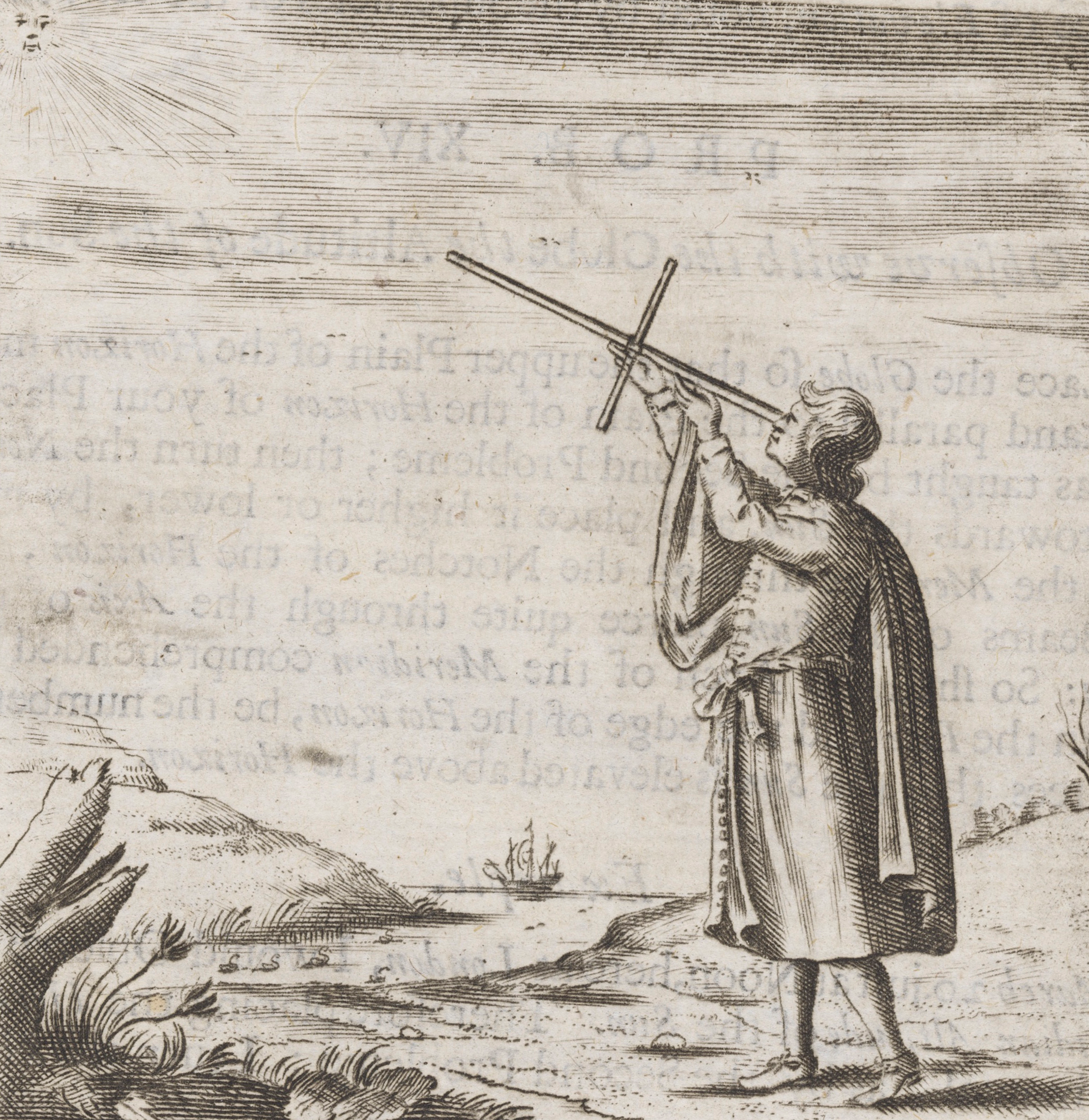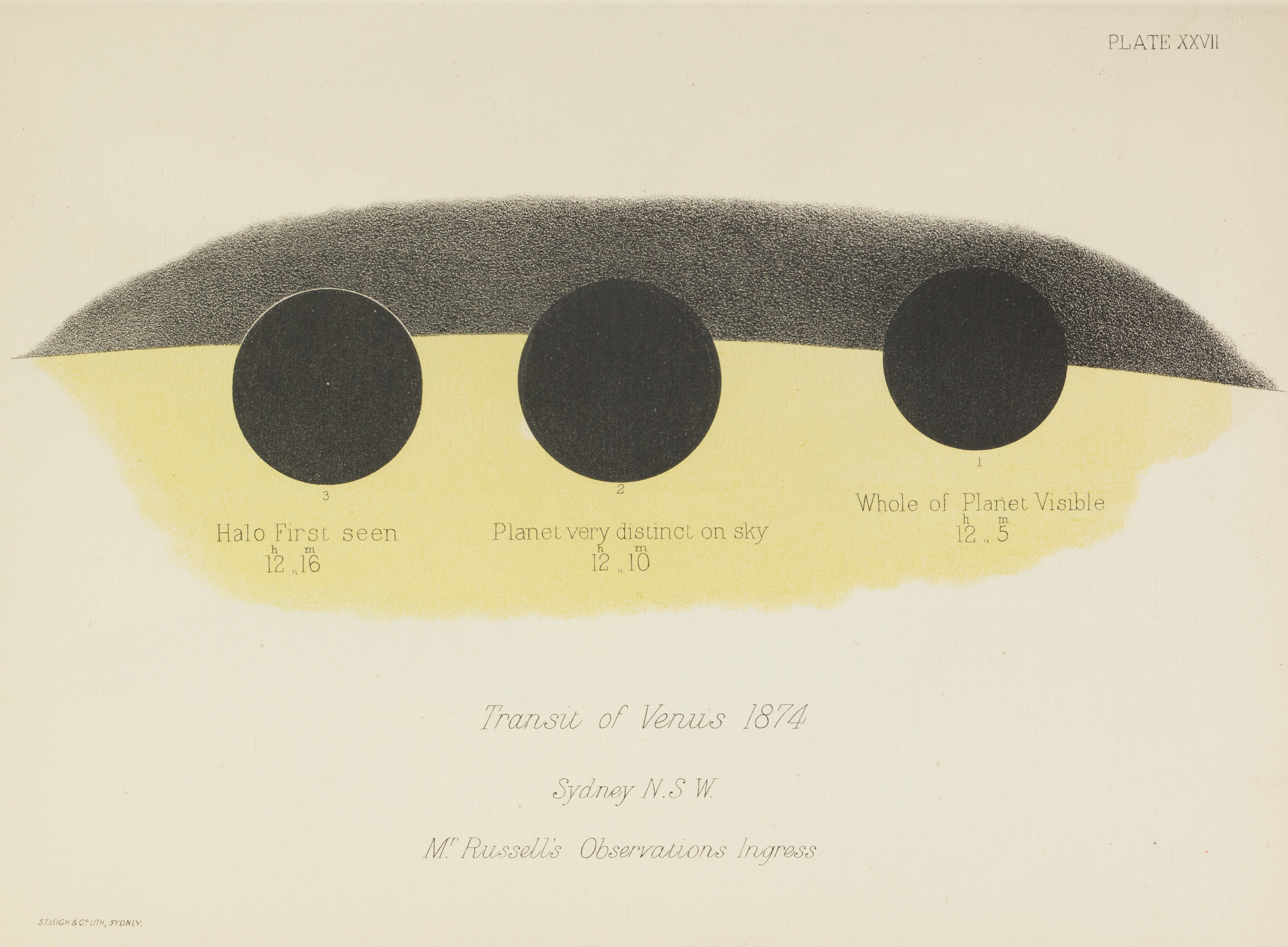Take 5 stargazers
Shining a light on five celestial favourites from the collection.
Measuring
People have looked up to the stars to aid wayfinding for thousands of years. This engraving shows a navigational tool known as a cross-staff. It was published in 1686 by Joseph Moxon, English printer, globe maker and hydrographer to Charles II. Moxon worked to popularise astronomy by producing instruction manuals to increase knowledge of the subject, and through the astronomical instruments he made and sold at his London establishment. The cross-staff was used to measure the angle between the horizon and a celestial body such as the sun or stars. With this knowledge a navigator could determine his latitude and direction. The stance of the cross-staff user — holding the end of the staff to the eye with one hand and grasping the sliding measuring gauge with the other, like an archer taking aim at the sun — gave rise to the phrase ‘shooting the stars’.
Charting
The idea of making spherical models of the heavens and Earth originated with the ancient Greeks. Printed globes as we know them today emerged in the early sixteenth century and became steadily more accurate as new discoveries were made. Pocket globes were an extremely popular luxury item from the early eighteenth to the mid-nineteenth century, designed to be held in the hand and to demonstrate the wealth and intellectual pursuits of their owners. Celestial globes like this rare example, made by England’s best globe makers the Cary Brothers around 1800, shows the 48 constellations charted by Roman astronomer Claudius Ptolemy. New constellations were added as star catalogues were compiled and updated.
Tracking
The passage of a planet between a star and Earth is called a transit. As we see in this colour plate, printed in 1874, when the orbit of Venus brings the planet directly between the sun and Earth, it appears to stargazers below as a black dot tracking across the bright surface of the sun. Known as the Transit of Venus, these rare events occur twice, eight years apart, and then not again for over a century. Careful observation of this transit has allowed astronomers to measure the distance between the Earth and the sun and to calculate the size of the solar system, which assisted in nautical navigation. Captain James Cook’s Endeavour voyage to observe the transit from Tahiti, in June 1769, meant that the transit played a crucial part in the first European visit to Australia’s east coast. The Transit of Venus will not happen again until 2117.
Mapping
The Astrographic Catalogue was arguably the most significant astronomy project undertaken in Australia during the late nineteenth and early twentieth centuries. Sydney Observatory was part of an international consortium that worked together to map the stars using photography. Over 740,000 stars were recorded there because of the starrich zone allocated to the Sydney Observatory. The stars were photographed using special ‘astrographic telescopes’, and more than 1400 photographic plates were produced. A group of 22 women, known as ‘astrographic computers’, worked between 1916 and 1968 to painstakingly measure the stars, calculate their positions, and identify double stars and other irregularities on the glass plate negatives. This photograph, taken by Charles Wakeford for PIX magazine on 10 February 1941, shows Mary Allen (right) and Ethel Wilcocks (left) using the astrographic plate measure machine to map the distance between the stars and record their brightness.
Listening
Australians have been at the forefront of international radio astronomy since the emergence of radar technology during World War II. This 11-metre (36 foot) diameter transit parabola radio telescope was photographed by Kerry Dundas soon after it was built in 1952 at the CSIRO’s Potts Hill field station in Sydney’s western suburbs. The largest steerable radio telescope in the southern hemisphere at the time, and the second largest in the world, it was used for listening in on the behaviour of hydrogen gas clouds between the stars. First detected as a radio ‘hiss’ in the 1930s, it was later concluded that this cosmic noise was radio waves coming from the centre of the galaxy. When Harvard University scientists first detected the 21 cm (1420.4 MHz) hydrogen emission line (known also as the H-line) in 1951, radio physicists around the world quickly mobilised to confirm the discovery. The initial confirmation was made by Chris Christiansen and Jim Hindman, who worked at the Potts Hill station.
Margot Riley, Curator, Research & Discovery
This story appears in Openbook winter 2023.




